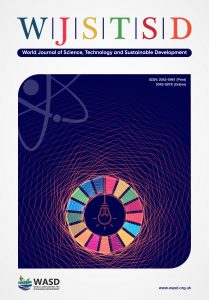Human sensitivity towards nature: Eastern and Western perspectives, Dr. Anne Randerson
 Dr. Anne K. Randerson
Dr. Anne K. Randerson
Cross Cultural Horizons, Encinitas, CA
United States
Email: anne@crossculturalhorizons.com
DOI: 10.1108/WJSTSD-05-2015-0023
Purpose: The purpose of this paper is to focus on the religious and philosophical ways humans view nature, and how we perceive and treat our planet, including all its living entities. Its purpose is to make a positive influence on individuals living in the Eastern and Western hemispheres, so that those who are unaware may be given an unexpected glimpse at our current human situation, which appears increasingly discouraging with regard to sensitivity towards nature.
Design/methodology/approach: By offering a subtle, insightful view of human nature and its connection to religion and the universe, rather than facts and statistics on pollution alone, this conceptual paper introduces theoretical and philosophical discussions from comparative literature as well as narratives from actual interviews conducted in Japan.
Findings: As human beings, we need to better define our position in this world, in order to learn to appreciate the true value of our own existence. With regard to the question of where humans lie in nature, a basic difference exists between Asian and Western views. The Asian view of nature has traditionally regarded humans and the universe as continually interacting together – human beings are an integral part of life. This differs from the basic Western notion of humans and nature comprising two separate, opposing elements.
Originality/value: This paper offers readers a deeper understanding of how humans feel and perceive nature, to help them realize how urgent it is for us to respect our natural resources on Earth.
Keywords: Religion; Sustainability; Sensitivity; Nature; Human; Spiritual.
Citation: Randerson, A.K. (2015), "Human sensitivity towards nature: Eastern and Western perspectives", World Journal of Science, Technology and Sustainable Development, Vol. 12 No. 3, pp. 172-182. https://doi.org/10.1108/WJSTSD-05-2015-0023

